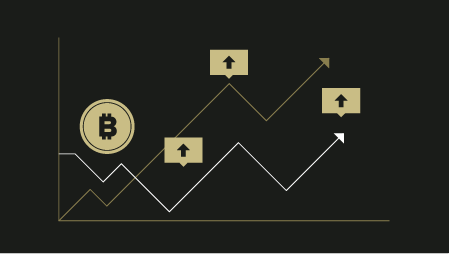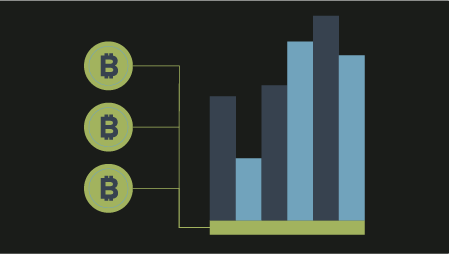Banking Automation is the future of the financial industry. In 2017 McKinsey [1] reported that newer technologies were causing disruption in financial institutions and that companies adopting digital alternatives would increase their profits and productivity as a result. Accenture [2], reported that digitally focused and digitally active banks have seen a net revenue growth of 1.2 and 0.5 percent respectively, whereas the rest has had zero growth.
However according to the Digital Banking 2019 Report on Retail Banking Trends and Predictions [3] almost half of the surveyed organizations said their digital transformation journey was in the early stages, with only 7% believing they are a ‘digital organization’. More traditional banks are seeking to adopt technology faster, as consequence of Covid-19, and as they try to become more digital to meet the requirements of their customers who are working remotely and require a constant digital customer experience. In Europe digital adoption jumped from 81 percent to 95 percent as a result of the COVID-19 [4]. Besides the obvious, it’s important to identify other elements that make the implementation of automation and speed up of digital transformation vital for the banking industry.
Why Automation Adoption is imperative for Banks
Costumers are doing everything digital; from ordering grocery, to talking to their doctors, making payments, virtual tours, you name it. They expect the same level of simplicity and convenience from the financial institutions they bank with. This becomes even more relevant today, while we are still facing Covid-19 and for the post pandemic period.
To start, in Italy, Spain, and the US, 15 to 20 percent [5] of customers surveyed expect to increase their use of digital channels once the crisis has passed; in other markets that percentage ranged from 5 to 13 percent. Preference for handling everyday transactions digitally is as high as about 60 to 85 percent across Western European markets, even for customers 65 years of age or older [6], while 73% of Americans most often access their bank accounts via online and mobile platforms. In addition, Europe’s neobanks could have up to 85 million customers or about 20% of the population over the age of 14, by 2023 [7]; given the agility, flexibility and technology deployed in these new banking channels.
Automation offers Financial Institutions exactly what they have identified as the three top priorities for the industry in 2020 and into 2021: Digital Transformation, Improvement of Customer Experience and Cost Management [8]; on this topic alone we have that the average company loses 552 hours annually to administrative or repetitive tasks, equivalent to one-third of the working year [9], this can be dramatically reduced or eliminated with automation technologies.
But now, why Back-Office Operations? Besides the already mentioned inefficiencies, the industry has done a lot on the customer-facing side, however, unless banks streamline and automate back-office operations, the everyday work will be affected, slow and inefficient. At the end of the day, the customer keeps being affected due to human error, slow processing, tracking issues, repeated work, poor communication, inconsistency, etc;. In order to provide a customer centered service, both back-office operations and customer-faced operations need to be connected and streamlined. We also do good to remember that automation is not only a cost saving investment, but also a customer retention tool to generate increased profitability, agility and flexibility.
Automation Technologies for Banking Operations
1. Digital Process Automation (DPA)
Unlike Robotic Process Automation (RPA)– standalone technology that automates existing rule-based processes – DPA unifies different technologies to transform your entire organization. It allows you to have a holistic approach to automation, from start to finish, end-to-end. DPA streamlines processes and optimizes them for higher productivity, cost reduction, work simplification and better collaboration. It assists with automation connecting processes across the organization under a unified system and where human action could be needed.
The platforms are designed to allow anyone to design workflows regardless of coding experience; these ones are called no-coding applications; although you also find low-code applications. However, these ones will need some kind of intervention from a skilled professional. These platforms simplify integrations and workflows through APIs, smoothing out data sharing across apps. With this freedom, LoB managers and decision-makers can quickly automate processes reducing or eliminating IT intervention.
Back-office operations, Human Resources, Customer Support, Vendor Management, routine finance functions, Compliance, Infosec and IT are the areas that have benefited the most until now; however, DPA can take care of almost any process where human intervention is required.
To understand if DPA is the right technology for your project ask yourself these questions:
- Do I want to automate a process end-to-end or partially?
- Do I need human intervention for decision making?
- Do I want to improve the user experience and provide a consistent service?
- Am I looking to reduce training sessions?
- Are critical processes involved and human errors are recurrent?
- Do I need to automate processes that require me to follow specific checklists or steps?
A positive answer to multiple of these questions, indicates that DPA may be the right approach to automation.
2. Robotic Process Automation (RPA)
RPA is the technology that allows anyone to configure computer software, or a “robot” to emulate and integrate the actions of a human interacting within digital systems to execute a business process. It automates a clear, defined, repetitive, high volume, rule-based process. RPA robots utilize the user interface to capture data and manipulate applications just like humans do.
They interpret, trigger responses and communicate with other systems in order to perform a variety of repetitive tasks. It is best used for handling repetitive tasks at a high volume, to increase output and decrease the busywork. Another advantage is that RPA platforms never sleep and make zero mistakes.
Some questions to verify if RPA is the right technology to use are:
- Does a human worker perform the task more than twice per week?
- Can the task be completed manually by a human sitting at a PC working with applications?
- Does the system lack an API or is too expensive to integrate?
- Do you need to invest a lot of money to integrate or upgrade the actual system?
- Does the task need to be completed quickly with limited staffing resources?
- Do employees dislike it?
If the answer to most of those questions is positive, RPA may be the right solution to automate the process in discussion. It should also be taken into consideration that DPA and RPA are technologies that can be combined in order to create a fully automated process without losing control of operations.
After years of customer-centric automation is now the time to look behind the lines and jump into back-office automation.
Read here more about banking automation and digital transformation.




